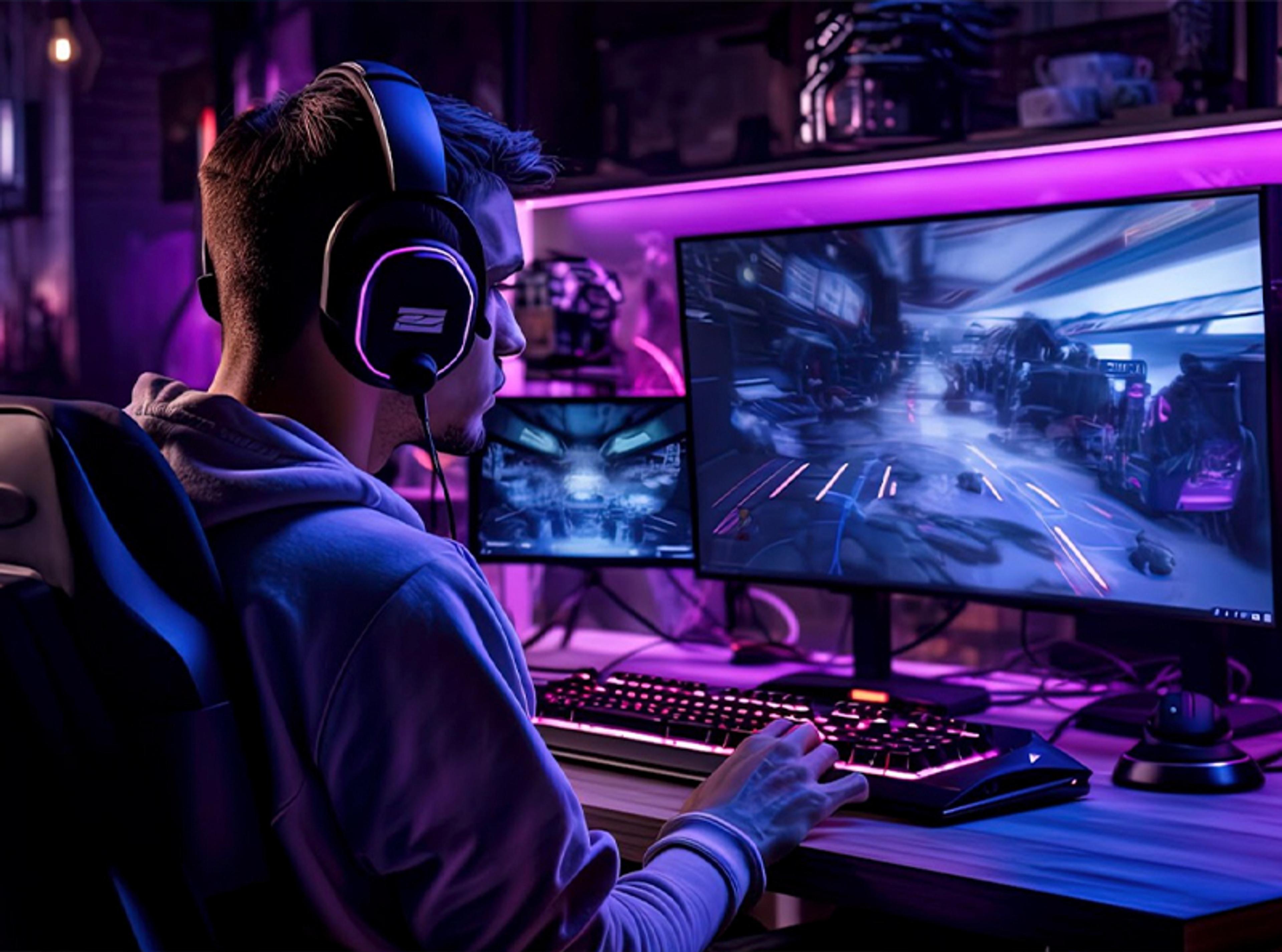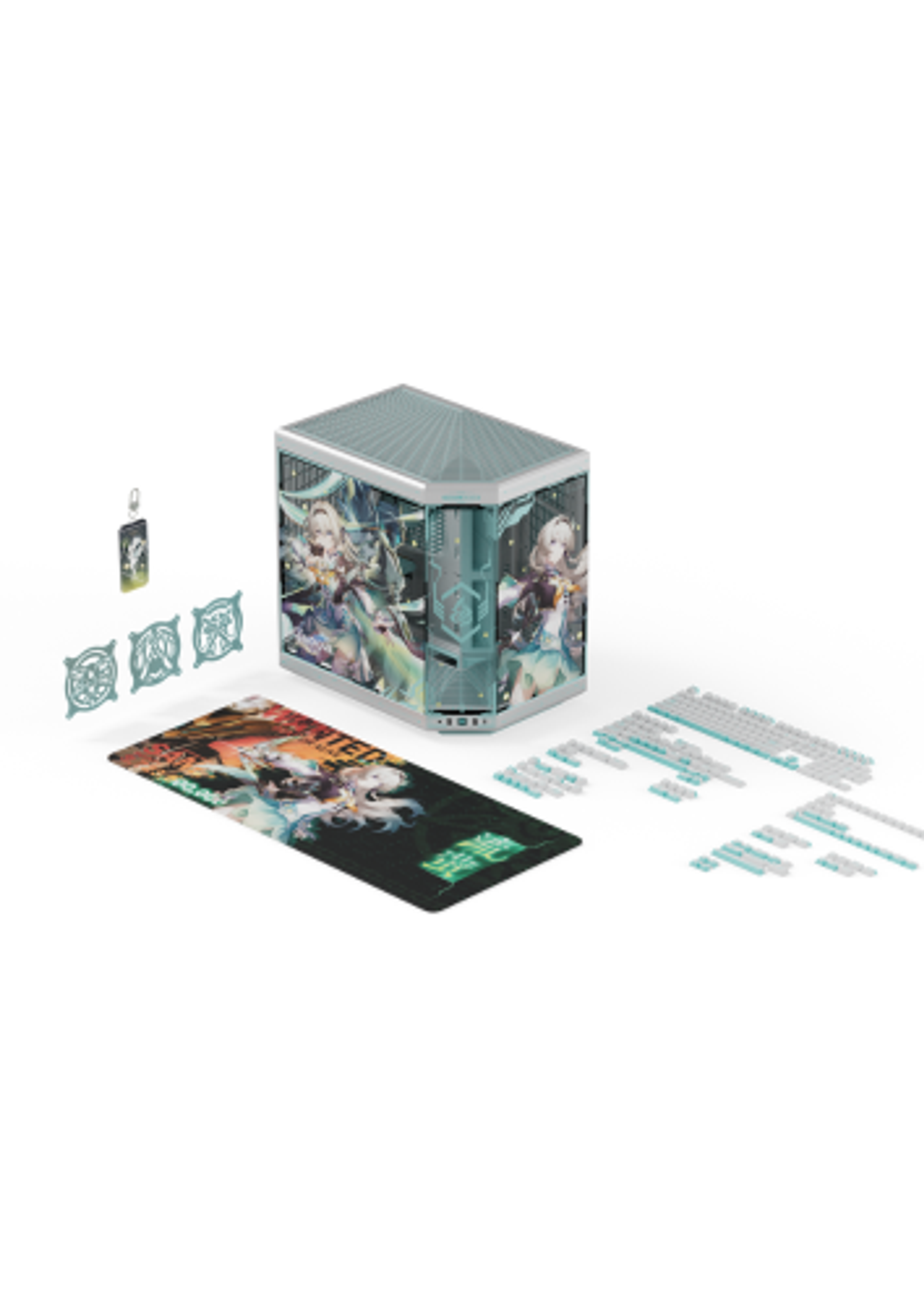
Gaming Monitor vs TV: What's the Difference?
Monitors vs. TV: Which is for You/What are the Differences
Choosing between a monitor vs. TV for gaming is a significant decision regarding the visual experience for PC users. Monitors are renowned for speed and precision, while TVs shine with larger screens and an immersive viewing experience.
With so many features and use cases, selecting the best display can feel overwhelming. However, there are differences between a monitor vs. a TV for gaming, and here's a breakdown of the factors to consider when picking the best option for any gaming needs.
Key Differences Between Gaming on a TV vs. a Monitor
Comparing the benefits of using a TV vs. a monitor for gaming means understanding the advantages each one offers for specific uses, from screen size and resolution to refresh rates and input lag.
Screen Size
Their screen sizes impact usability when deciding between gaming on a TV vs. a monitor. In the case of PC monitors, bigger isn't always better. Monitor sizes generally range from 24 to 35 inches, and since users typically sit 3-4 feet away, a smaller screen can often be more practical.
However, TVs benefit significantly from larger screen sizes, especially with higher resolutions like 4K, which enhance image quality. This difference in image quality makes TVs more suitable for tasks like entertainment and group viewing, while monitors excel in closer, more focused activities.
Resolution and Pixel Density
Since the choice of monitor or TV is about the visuals, resolution, and pixel density are crucial in deciding between a gaming monitor vs. a TV. For pixel density, measured by pixels per inch (PPI), the higher it is, the sharper the visuals. Focusing on monitors, resolutions like 1080p, 1440p, and 4K enhance gaming sessions by providing greater detail and clarity, especially on smaller screens.
TVs also benefit from higher resolutions, particularly for larger screens. Resolutions such as 1080p, 4K, and 8K deliver sharper, lifelike visuals. 4K is gaining popularity due to abundant content from streaming platforms, gaming consoles, and Blu-ray discs.
Refresh Rate and Response Time
For gaming and motion-heavy content, refresh rate and response time influence how smoothly and quickly visuals are displayed. Refresh rate, measured in hertz (Hz), refers to how often the screen updates its image per second, with higher rates delivering smoother transitions and reducing choppiness. For gaming monitors, refresh rates such as 120Hz, 144Hz, or higher provide a competitive edge in fast-paced games by improving responsiveness and clarity.
Similarly, TVs benefit from higher refresh rates, typically 60Hz, 120Hz, and sometimes 240Hz, which enhance fluidity and reduce motion blur, especially for action-packed content. However, beyond 120Hz, the performance gains are marginal for most users, with noticeable benefits primarily for dedicated gamers. Whether the choice is between a gaming monitor vs. a TV, high refresh rates contribute to a more immersive and responsive gaming experience.
Input Lag (Latency)
Input lag, measured in milliseconds (ms), is the delay between a user's input via peripherals such as a keyboard, controller, or mouse and the corresponding action appearing on the screen. Low input lag means more responsive and seamless gameplay, especially in competitive scenarios. Factors like image processing settings, display technology, and connection quality can influence input lag.
The difference between gaming on a TV vs. a monitor shows that monitors typically offer lower input lag than TVs, making them better suited for fast-paced gaming. While improving in this area, TVs often prioritize image processing, which can introduce delays unless “Game Mode” or other gaming-specific features are enabled.
Connectivity and Features
TVs and monitors differ significantly regarding ports, compatibility, and features. TVs typically offer a variety of inputs, such as HDMI and USB ports for connecting cable boxes, gaming consoles, and streaming devices. They also include features like built-in streaming apps, voice controls, and advanced image processing to enhance visual quality, though these can introduce input lag. TVs often feature remotes for convenient access to settings and can support adaptive sync technologies like VRR on high-end models with HDMI 2.1.
Monitors prioritize performance and compatibility with PCs and consoles, offering various ports such as VGA, DVI, DisplayPort, USB-C, and HDMI. They lack built-in smart features but are ideal for gaming with technologies like NVIDIA G-Sync and AMD FreeSync for eliminating screen tearing. Monitors generally avoid image processing, resulting in lower input lag and a more direct connection to the source. In the debate between a TV vs. a monitor for gaming, TVs are better suited for entertainment and casual gaming, while monitors offer more precise performance and customization.
Cost Comparison
When comparing a gaming monitor vs. a TV in terms of costs, TVs are more affordable than monitors. TVs typically offer a lower price per inch, with a 32-inch 1080p smart TV costing around $200, while a 27-inch 144Hz gaming monitor ranges from $250 to $400.
This price disparity arises from the specialized features of gaming monitors, such as high refresh rates, fast response times, and higher pixel density designed for close-up viewing. Still, monitors often justify their price with performance-focused features tailored for gaming.
Gaming on a TV vs. a Monitor: Which is better?
The choice between gaming on a TV vs. a monitor depends on the user's gaming style and setup.
Monitors are best for competitive gamers who prioritize performance. With higher refresh rates, lower response times, and near-zero input lag, they offer a crisp and highly responsive experience. Thanks to their compact size, adjustable stands, and support for a wide range of inputs, such as HDMI and DisplayPort, monitors are also great for desk setups. However, their smaller screens and lack of built-in entertainment features limit their versatility for casual gaming or group use.
TVs are perfect for casual gaming, home entertainment, and shared experiences. Their larger screens and built-in features, such as HDR support, smart operating systems, and integrated speakers, make them ideal for immersive single-player games, couch co-op sessions, or movie nights with friends and family. While TVs offer a more versatile all-in-one solution, their higher input lag and lower pixel density make them less suitable for competitive gaming or close-up tasks.
If performance and precision are the top priorities, a monitor is better; a TV is ideal for a more relaxed, immersive experience.
What to Consider When Choosing Between a Monitor vs. TV for Gaming
When deciding between a monitor vs. a TV for gaming, consider the primary purpose, available space, and budget for the gaming setup. Monitors are the best for competitive gaming, with faster response times, higher refresh rates, and advanced adaptive sync technologies. With larger screens, TVs deliver an immersive viewing experience, perfect for console gaming, movie nights, and shared entertainment.
Explore high-quality PC accessories and hardware from HYTE to create the ultimate gaming or entertainment experience. Uniquely designed PC cases and desk pads mean having a gaming PC that runs well and is stylish.
Featured Posts

Black Friday Gaming Gear & PC Deals 2025
HYTE Black Friday sales are here, and we’re excited to share the amazing deals we’ll be offering this year! Our Black Friday sales event is your chance to save big on some of our most popular products. From November 20th through December 2nd, enjoy incredible discounts on PC cases and gaming accessories that bring both performance and style to your setup. If you’re looking to upgrade, now’s the perfect time to do it with HYTE.

Official HYTE x Honkai: Star Rail Firefly Collection!
The stars have aligned, and the Official HYTE x Honkai: Star Rail Firefly Collection is ready for launch.

HYTE's 4th Anniversary Sale!
We’ve come a long way, and it’s all thanks to you! To celebrate HYTE’s anniversary, we’re giving back with a limited-time Anniversary Sale from Oct. 5 to Oct. 7.

HYTE X50 & X50 Air Pre-Orders Are Now Live!
The X50 redefines typical PC cases with a unique curved design and performance-driven elements. Pre-order the X50 and X50 Air NOW!
